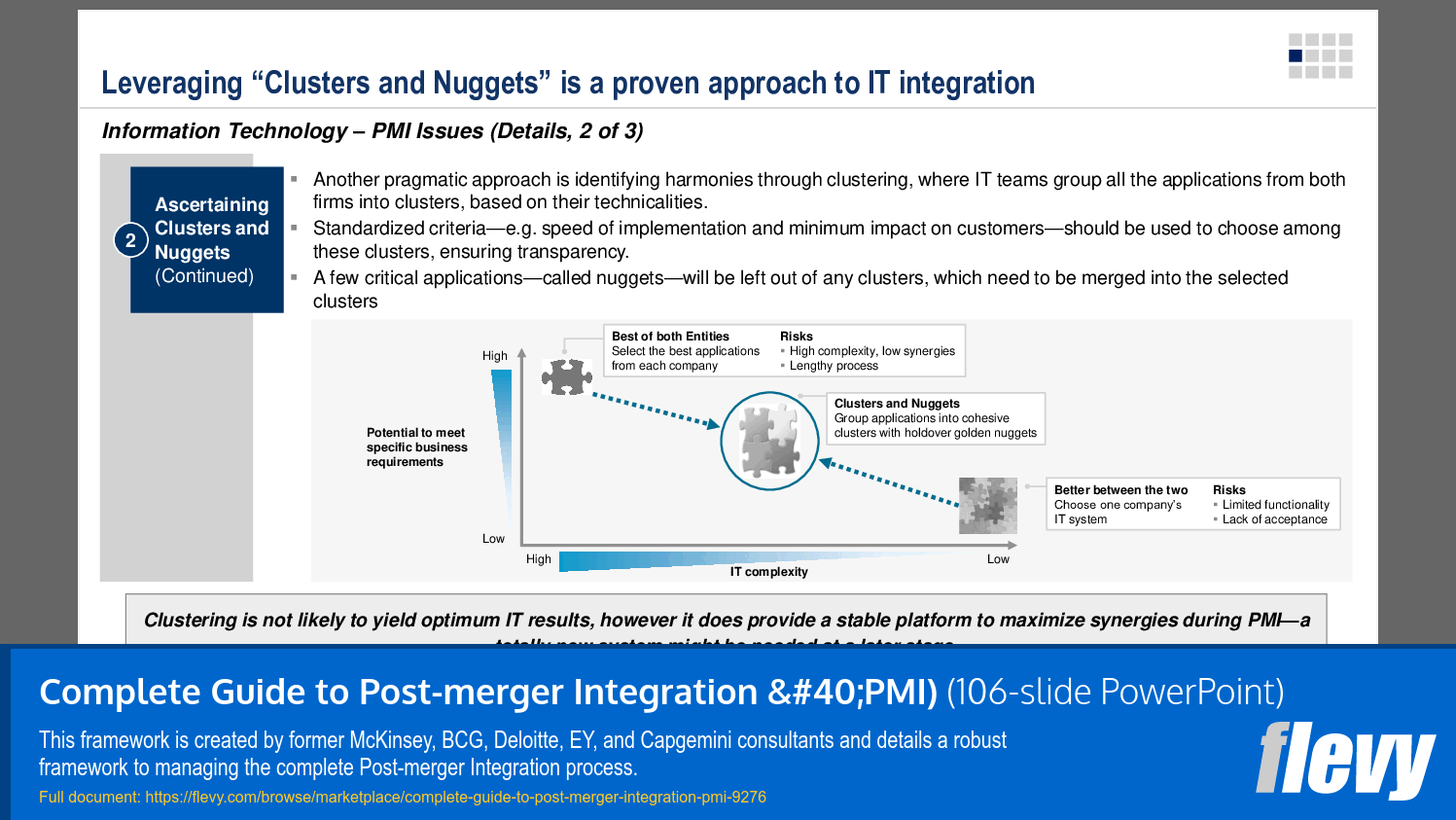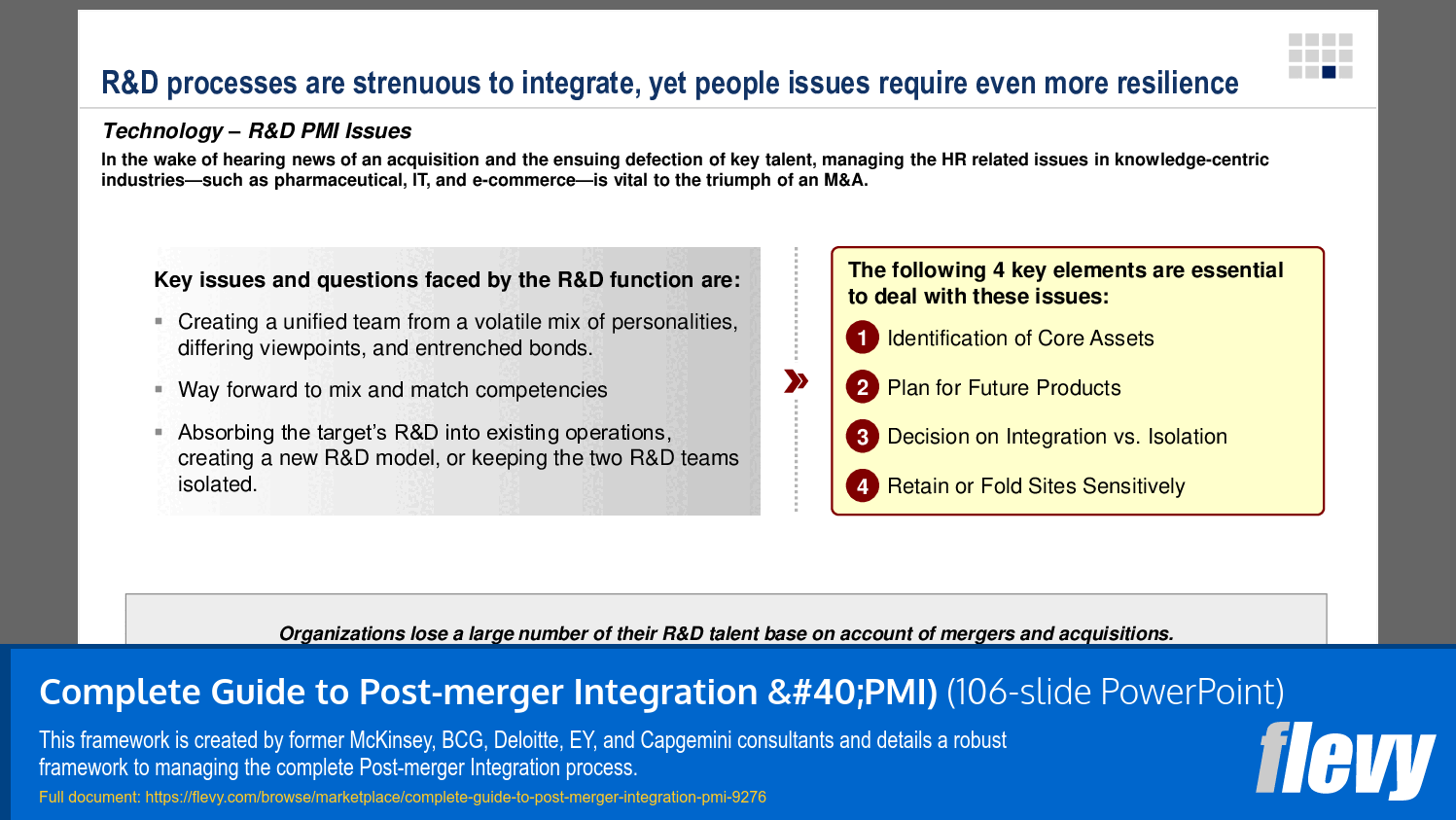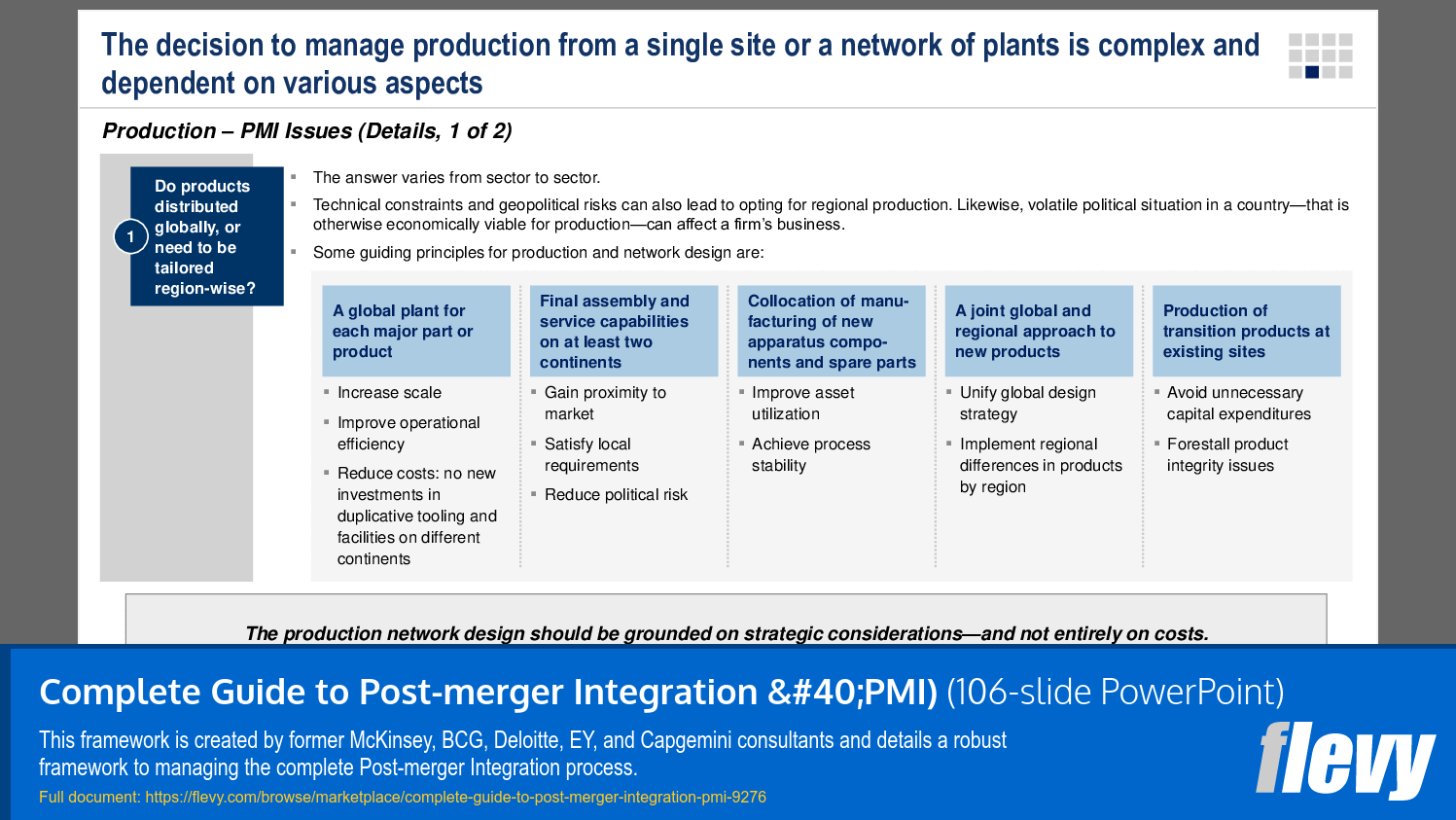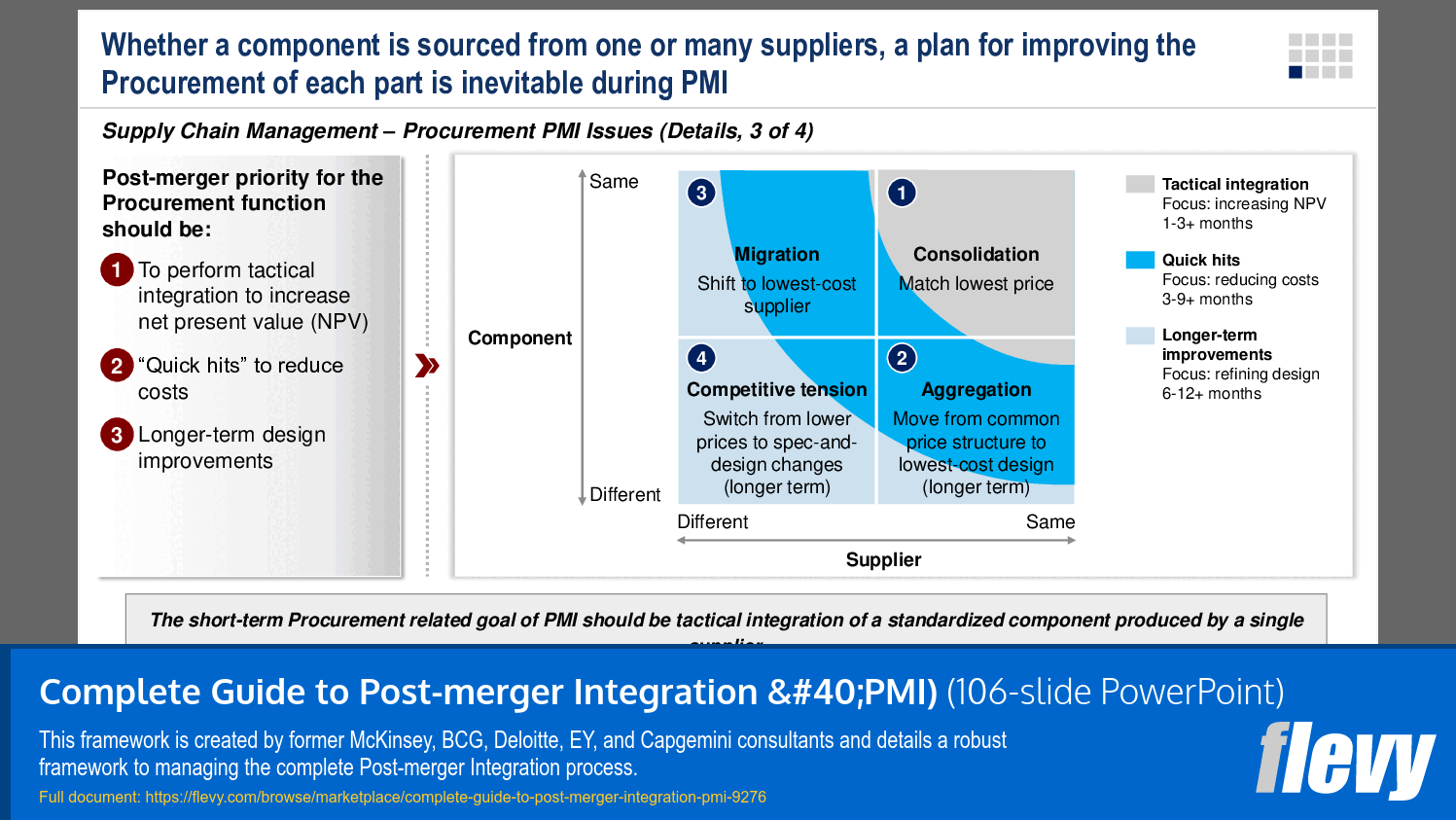Complete Guide to Post-merger Integration (PMI) (PowerPoint PPTX Slide Deck)
PowerPoint (PPTX) 106 Slides
BENEFITS OF THIS POWERPOINT DOCUMENT
- Provides a structured 5-phase approach to the complex and cumbersome PMI process.
- Provides a framework to setting up the IMO, along with the core roles and responsibilities.
- Provides actionable checklists and insights into 12 integration functional areas.
PMI PPT DESCRIPTION
Post-merger Integration (PMI), also known as M&A Integration, is a highly complex process. The bringing together of 2 distinct organizations experiencing change, while ensuring operations continues as usual is a challenge that can never be underestimated.
The PMI transition process often requires meticulous coordination across multiple functions to protect deal value and maintain business continuity. Executives must also navigate cultural alignment and stakeholder expectations to build a cohesive new entity.
This in-depth PowerPoint presentation on PMI serves as a comprehensive guide to the full PMI process. It is broken down into 5 sections. Each section provides frameworks and actionable steps to help executives drive an effective and efficient integration.
Post-merger Integration (PMI)
The initial section provides and overview to PMI and introduces the 5-phase PMI process:
1. Pre-planning – Establishes the strategic foundation by defining integration goals, identifying potential synergies, and outlining critical milestones.
2. Deal – Conducts due diligence, refines synergy estimates, and finalizes transaction terms to ensure alignment with overall business objectives.
3. PMI Planning – Sets up the Integration Management Office (IMO), defines roles and responsibilities, and lays out detailed plans for functional and cultural integration.
4. PMI Implementation – Executes Day One readiness activities, tracks synergies, and addresses organizational and cultural integration in real time.
5. PMI Optimization – Completes remaining integration tasks, assesses outcomes, and streamlines processes to sustain long-term performance and synergy realization.
Integration Management Office (IMO)
This section discusses the IMO, which acts as the central hub responsible for planning, coordinating, and executing PMI efforts. An effective PMI process requires establishing an IMO early on (during the PMI Planning phase) to maintain strategic alignment across functions, ensure swift decision-making, and oversee synergy realization.
The primary goal of the IMO is to align integration activities with the strategic objectives of the merger or acquisition. The IMO ensures efficient communication, risk management, and timely delivery of synergy targets.
Core PMI Roles
This section discusses the 4 core PMI roles to achieve deal value:
1. Integration Owner
2. Integration Steering Group
3. Integration Manager
4. the Integration Teams/Streams
Day One Activities
"Day one," also known as "Closing," marks the start of the PMI Implementation phase. This section the 3 focus areas during this critical time:
1. Corporate Communications
2. Operation Structure
3. Systems & Controls
Integration Functional Areas
This section represents the bulk of the presentation. It provides deep dives of 12 functional areas:
1. Finance & Accounting
2. Legal
3. HR & Personnel
4. Corporate Communications
5. Information Technology
6. Corporate Culture
7. Sales & Marketing
8. After Sales & Service
9. Supply Chain Management
10. Production
11. Technology
12. Synergies
Got a question about the product? Email us at support@flevy.com or ask the author directly by using the "Ask the Author a Question" form. If you cannot view the preview above this document description, go here to view the large preview instead.
Source: Best Practices in PMI PowerPoint Slides: Complete Guide to Post-merger Integration (PMI) PowerPoint (PPTX) Presentation Slide Deck, LearnPPT Consulting
PMI PPT SLIDES


















